

The TRC is organized into six Laboratories, each pursuing its own main R&D theme. These are the Typhoon Observation Research Laboratory, the Typhoon Prediction Research Laboratory, the Typhoon Power Generation System Development Laboratory, the Social Implementation Laboratory, the Regional Disaster Prevention Laboratory and the Typhoon Data Science Laboratory.
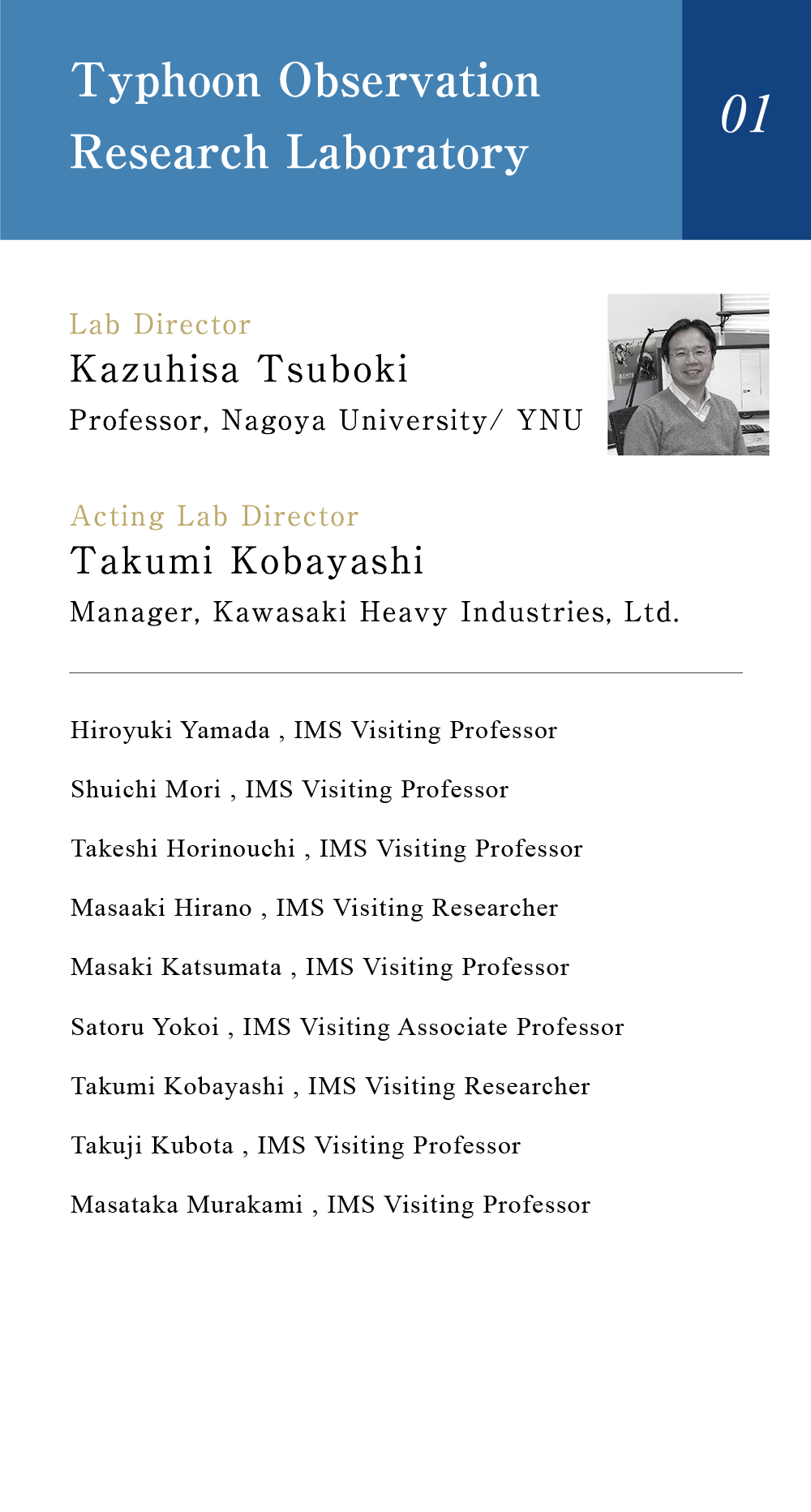
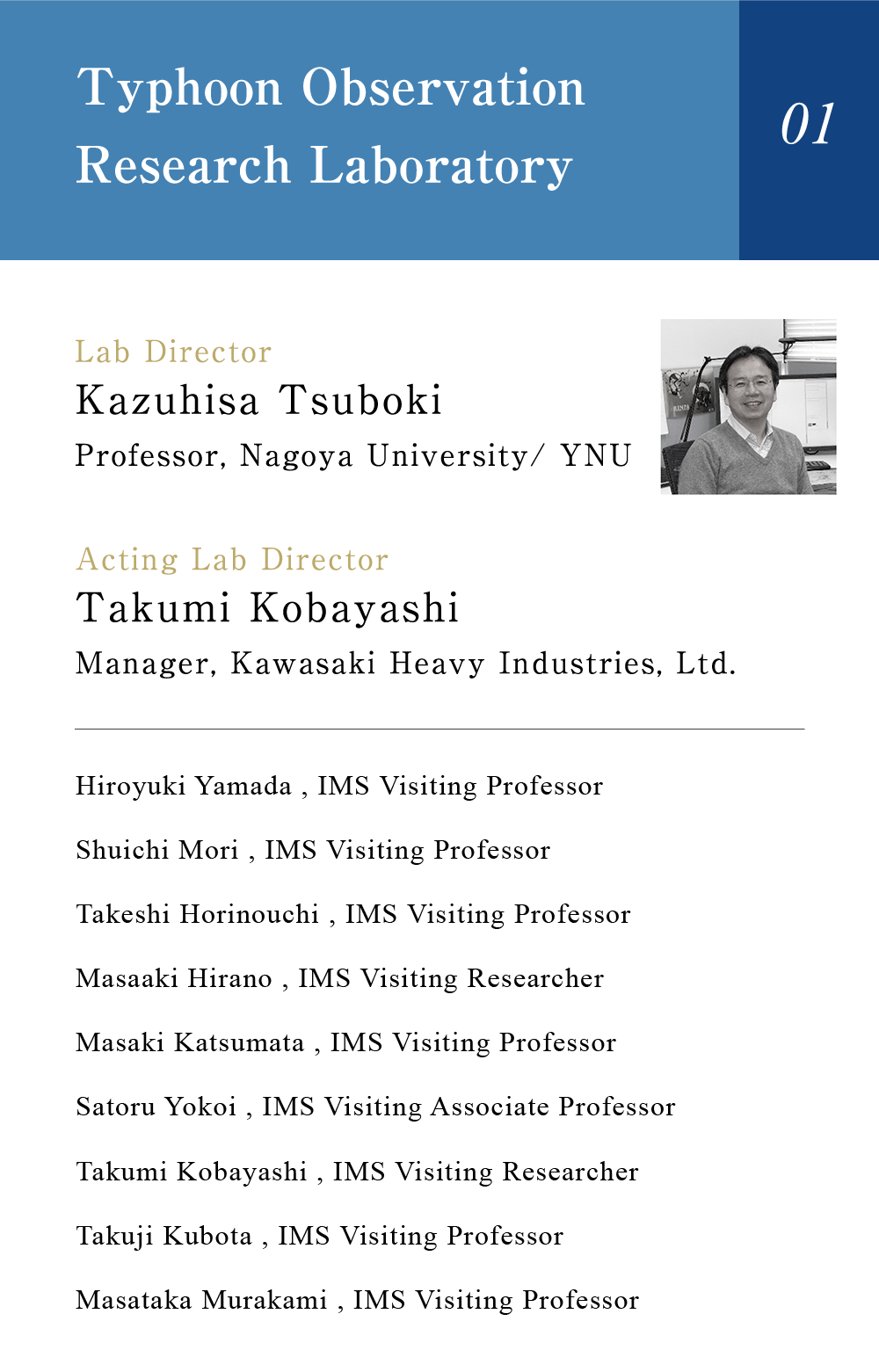

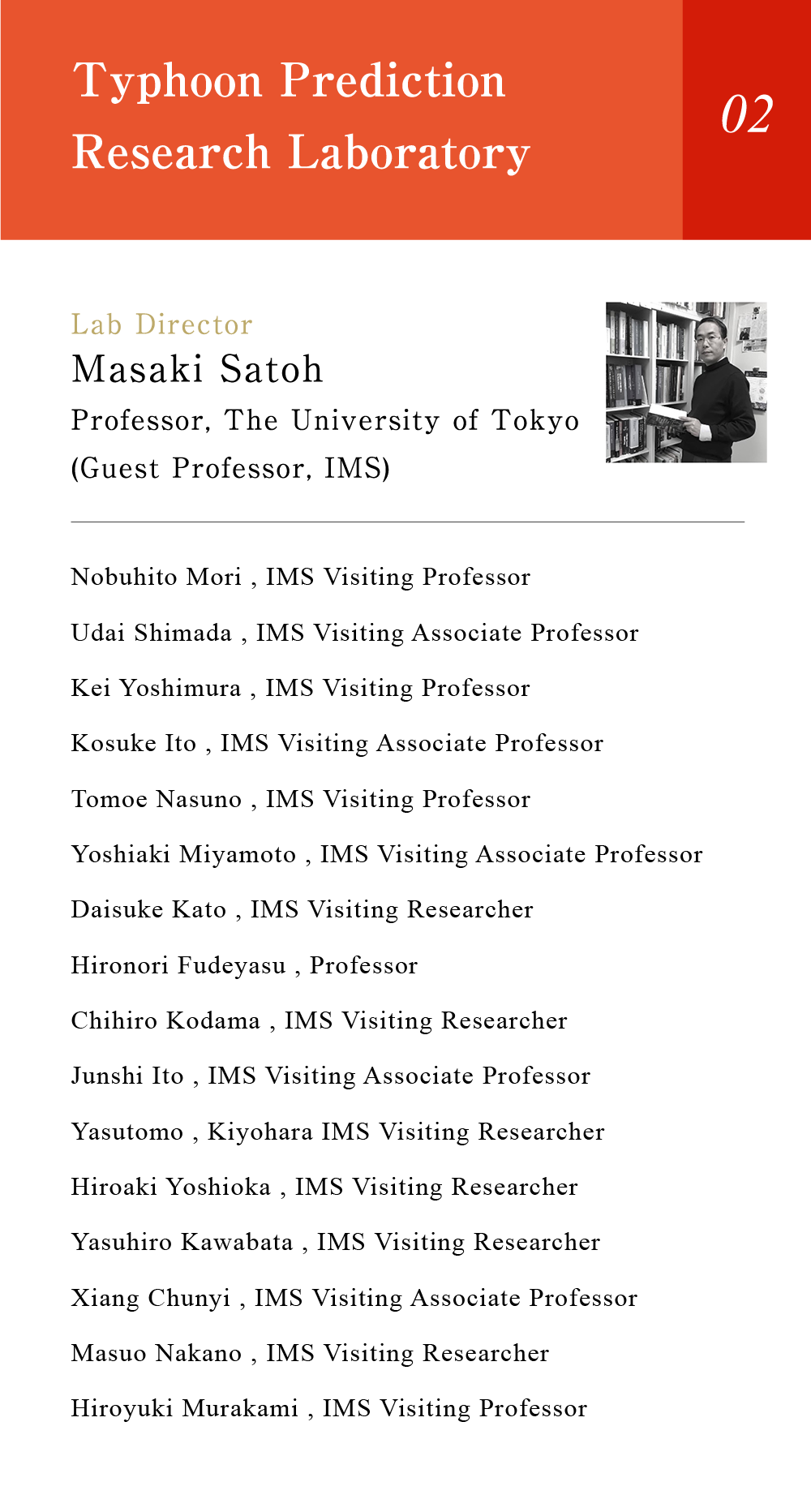
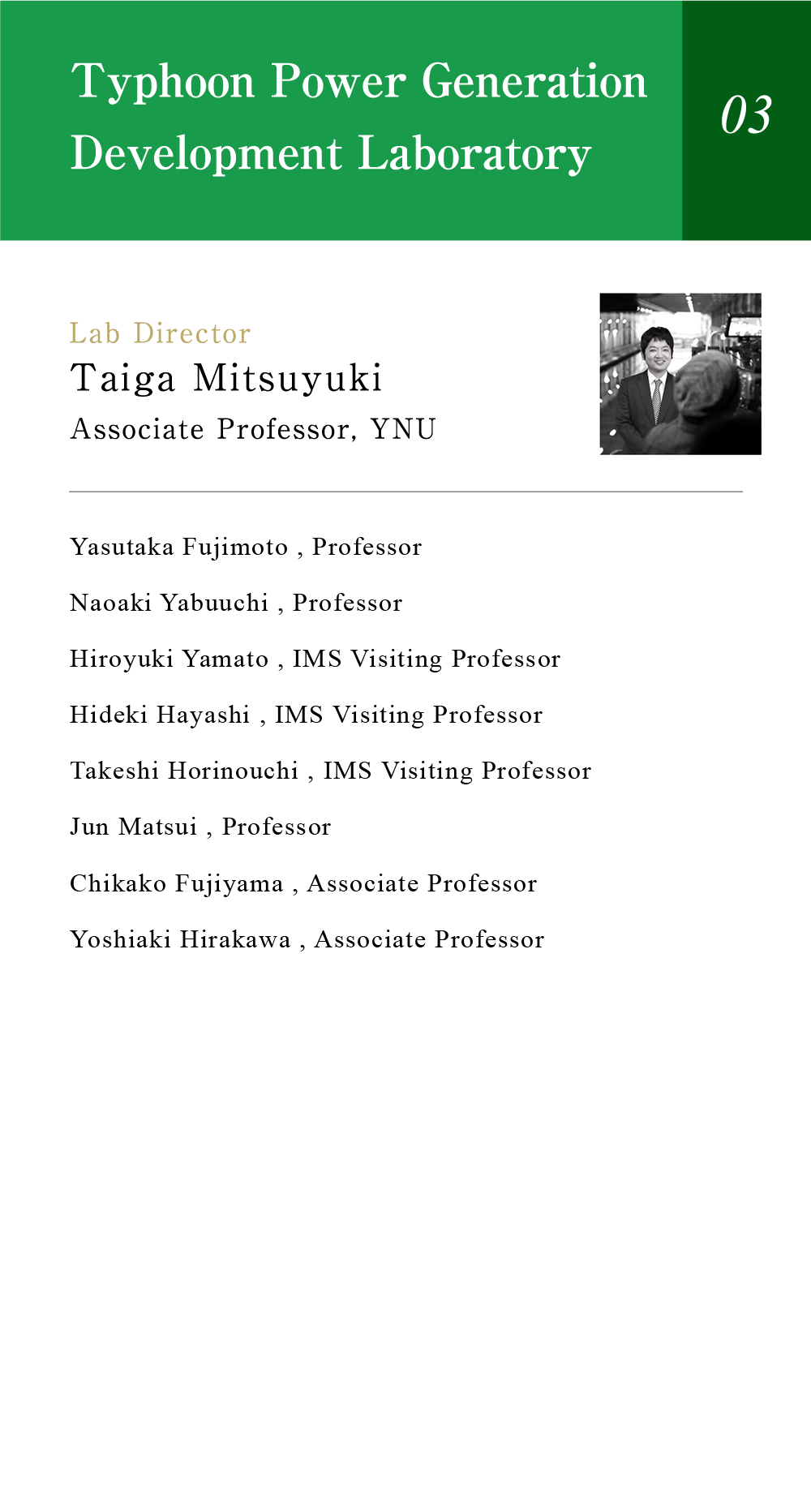
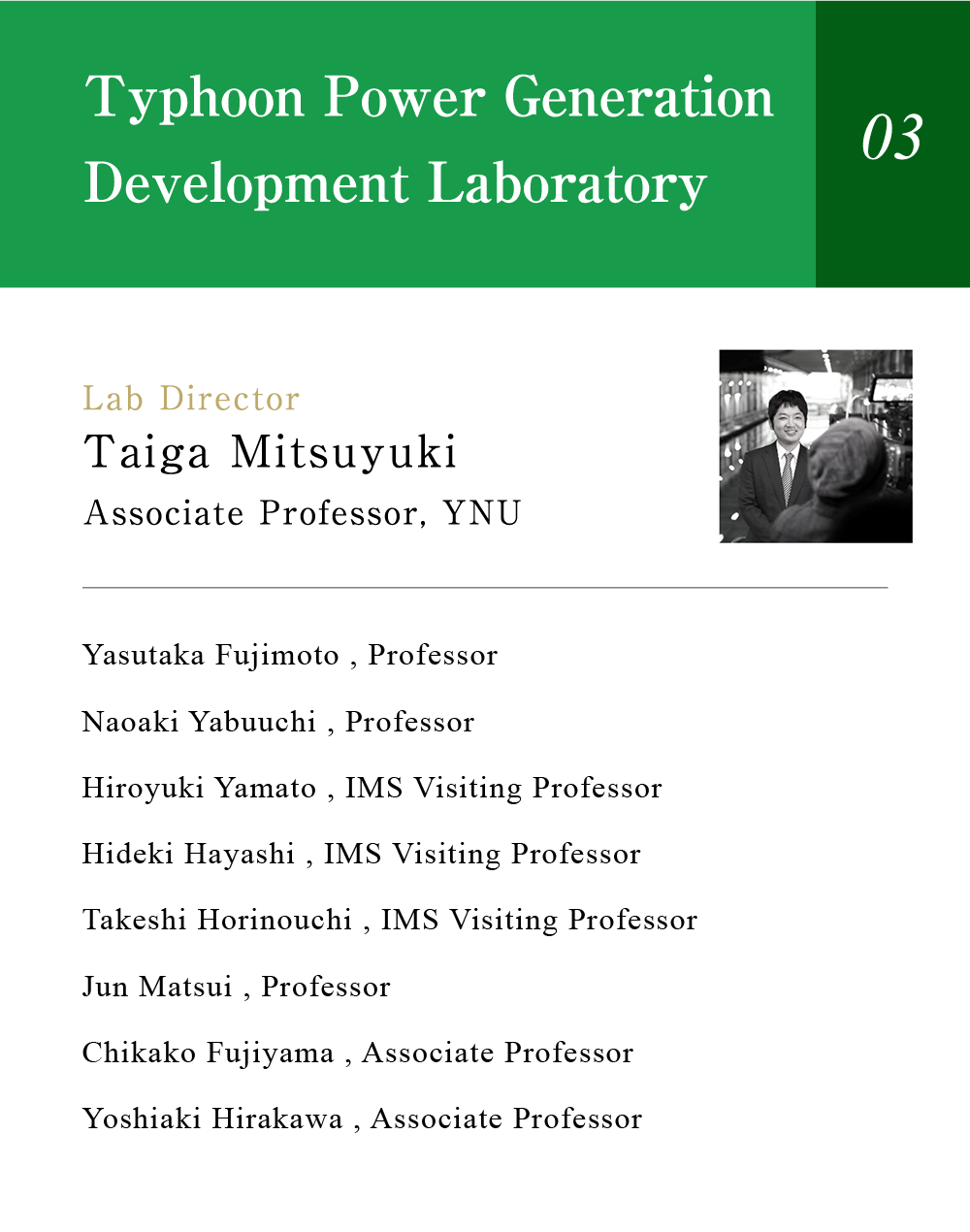
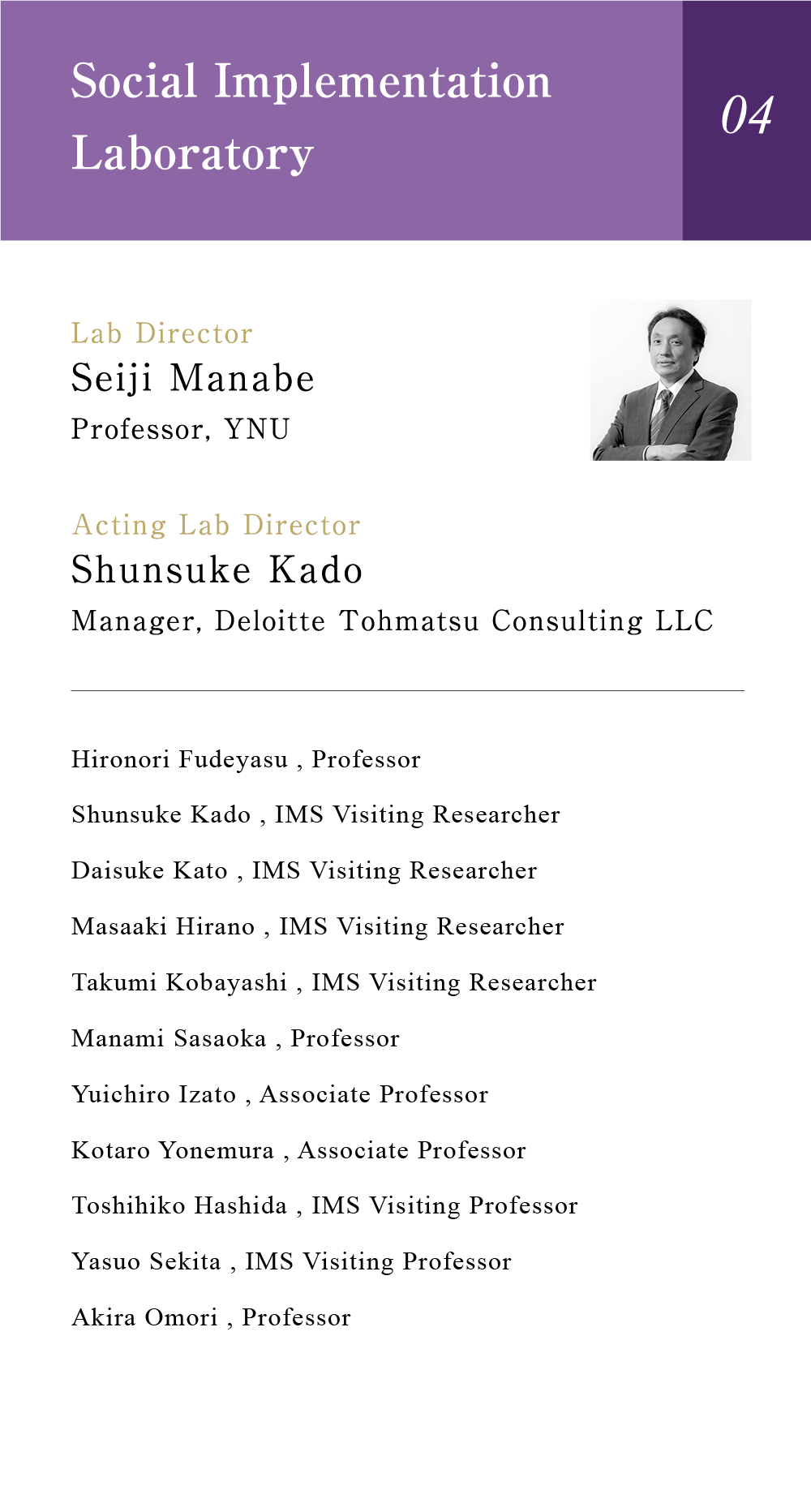

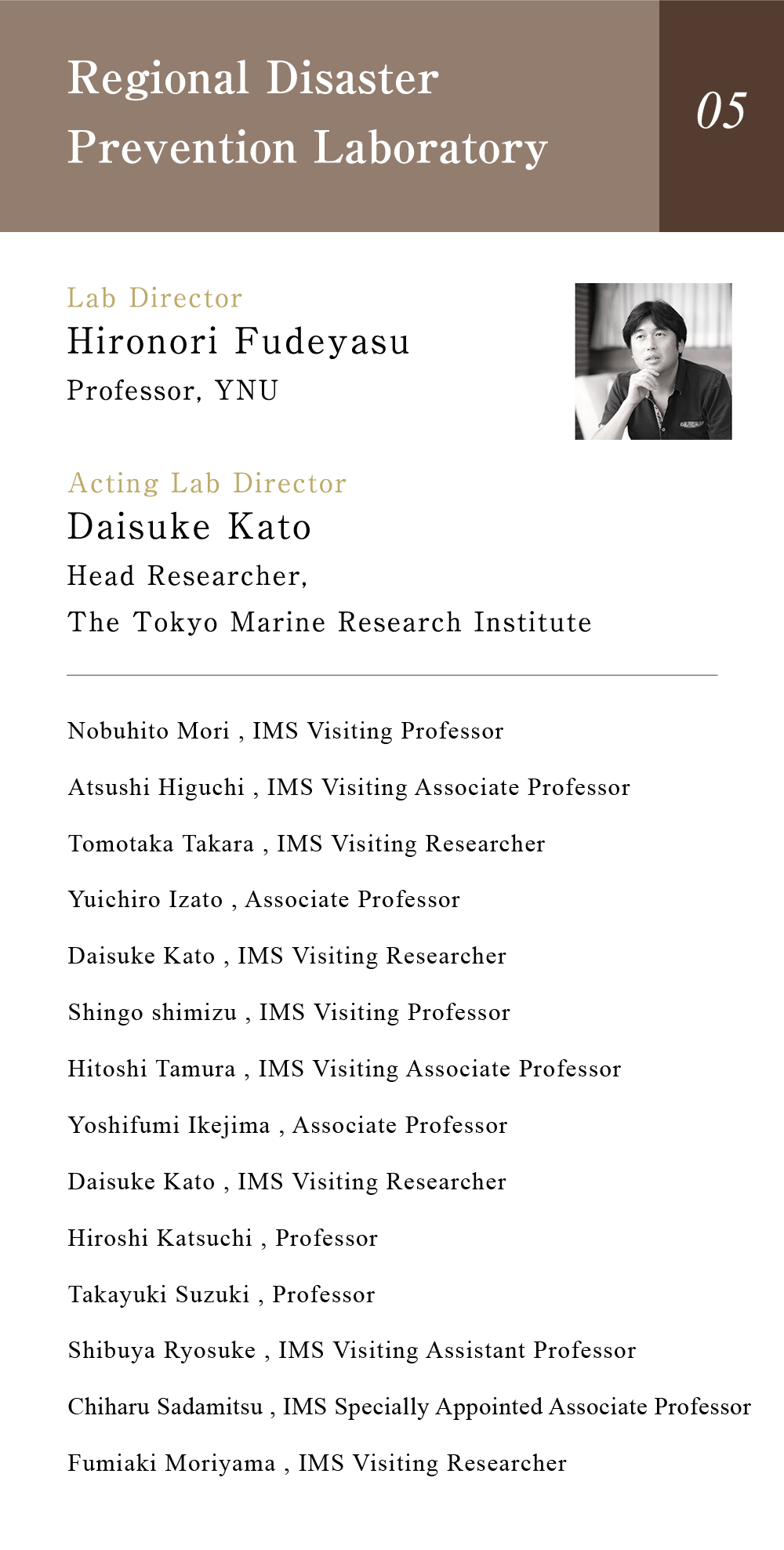
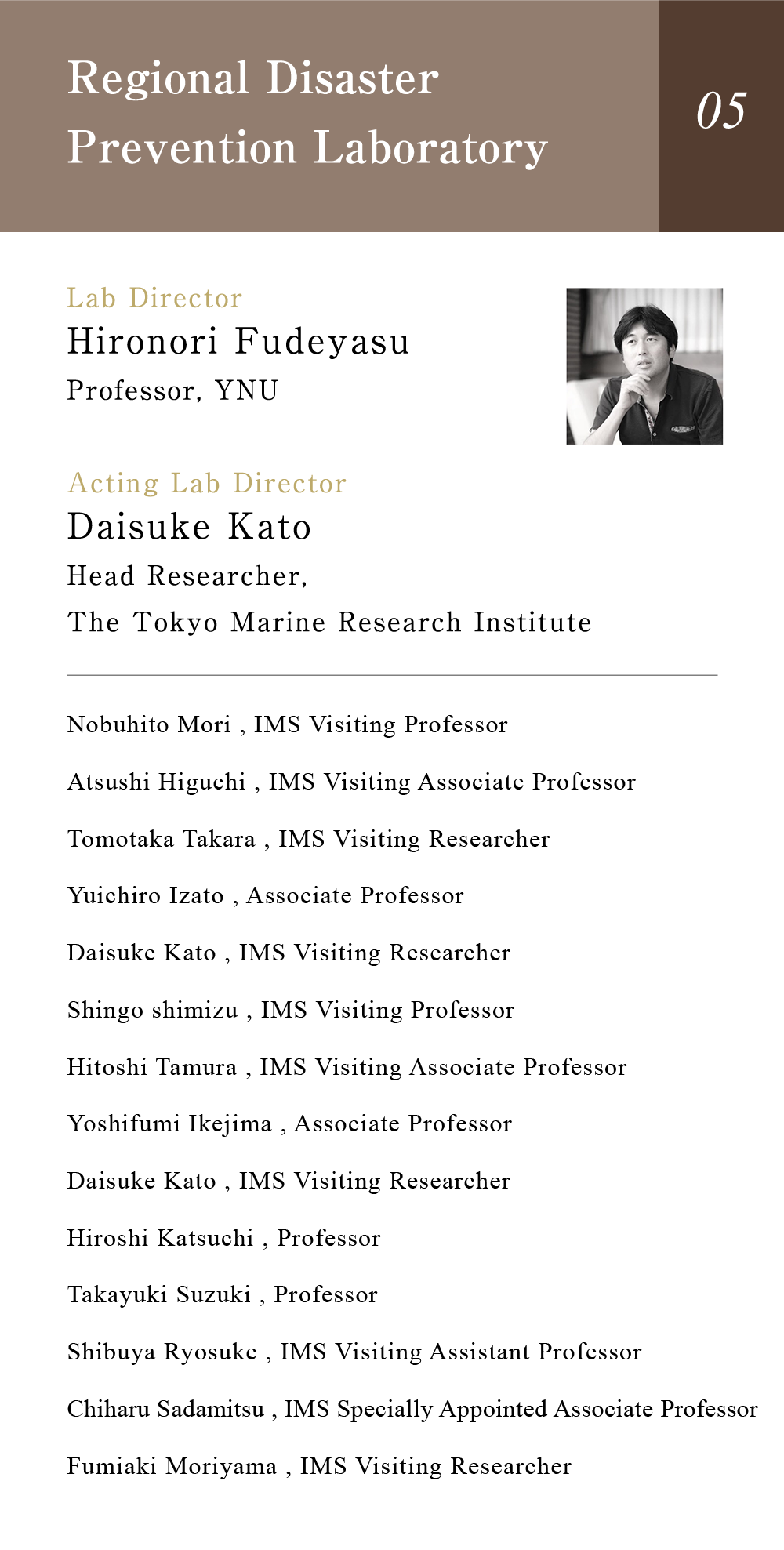
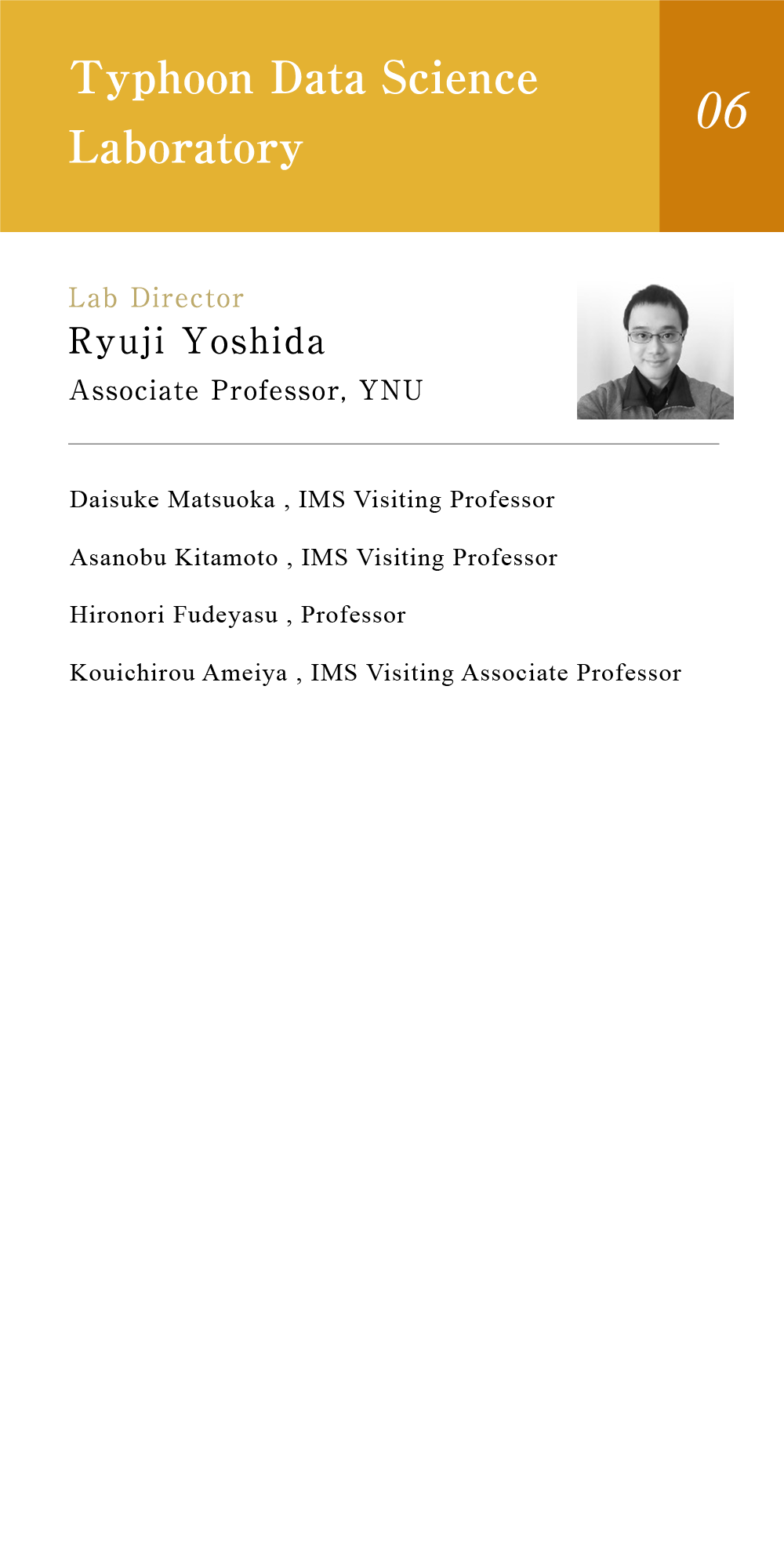
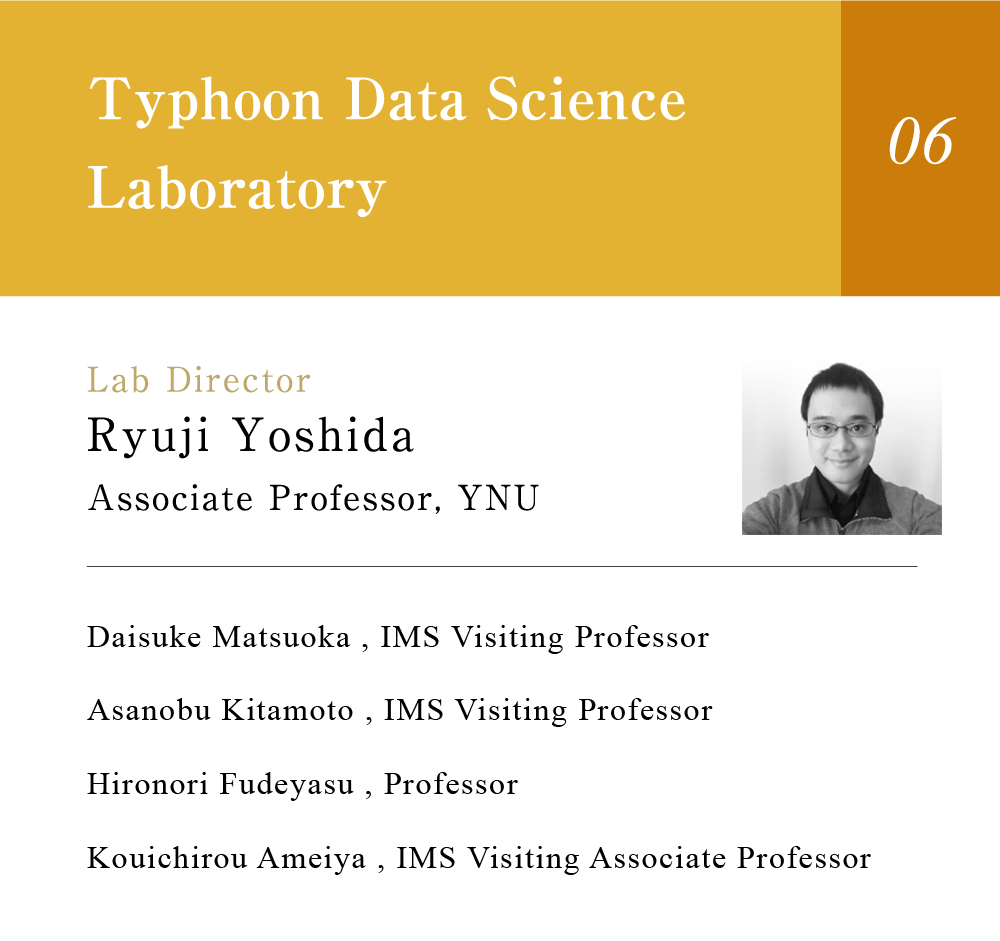
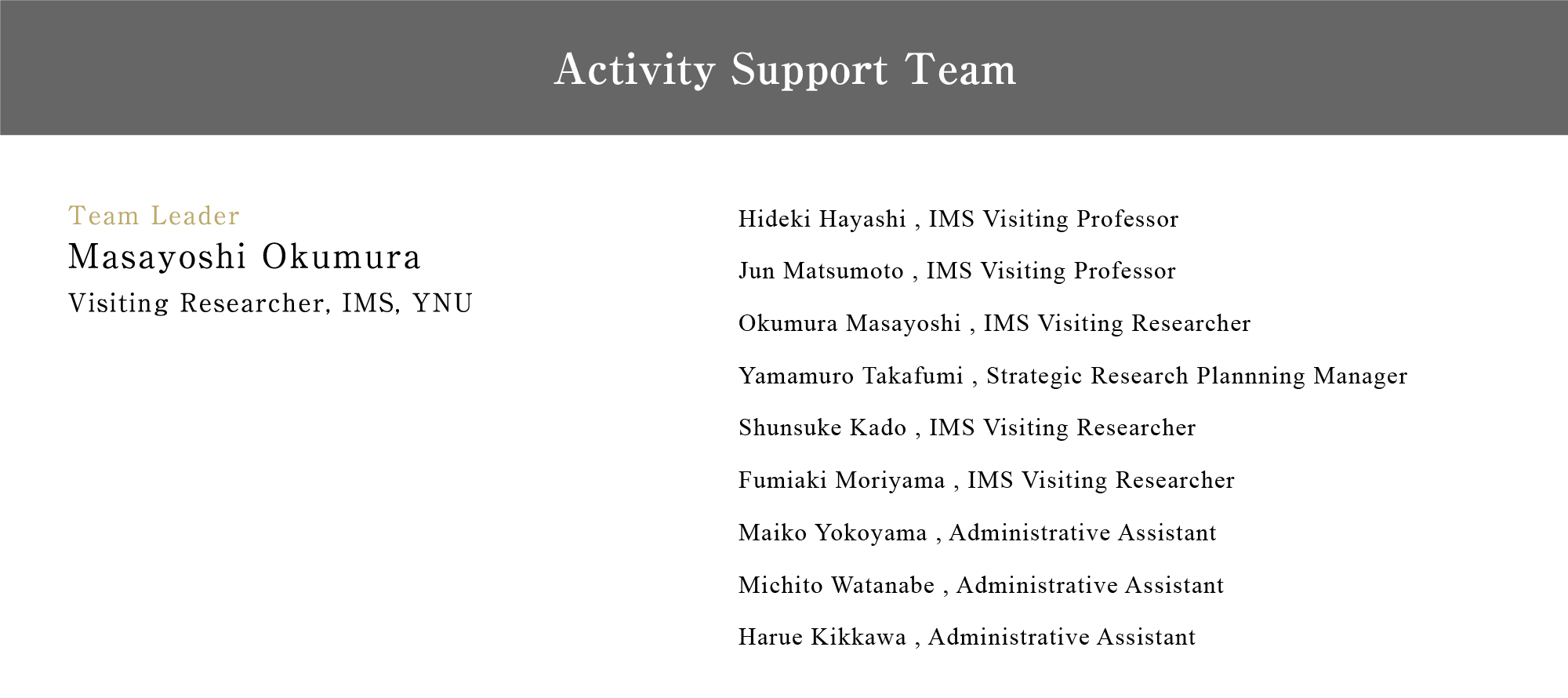
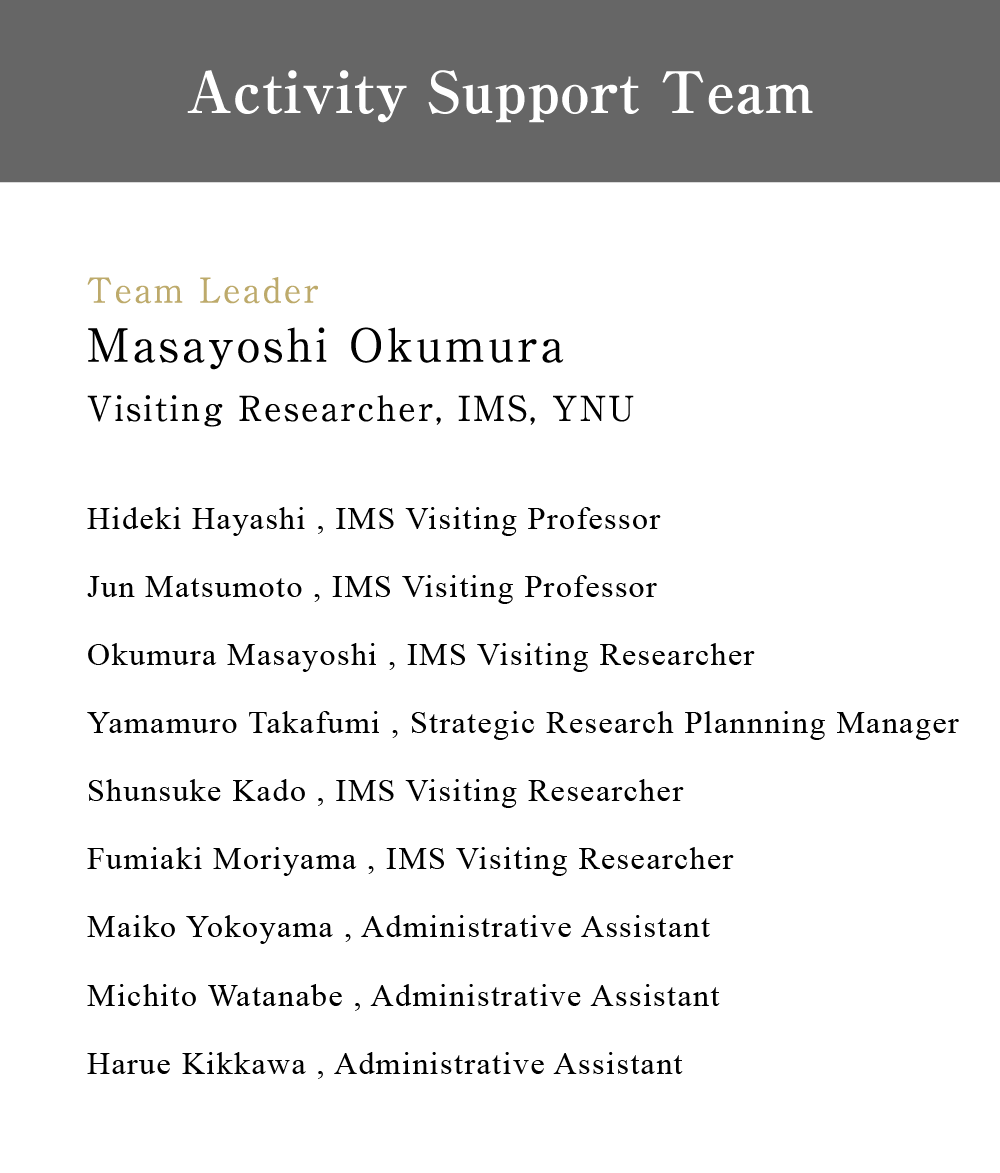
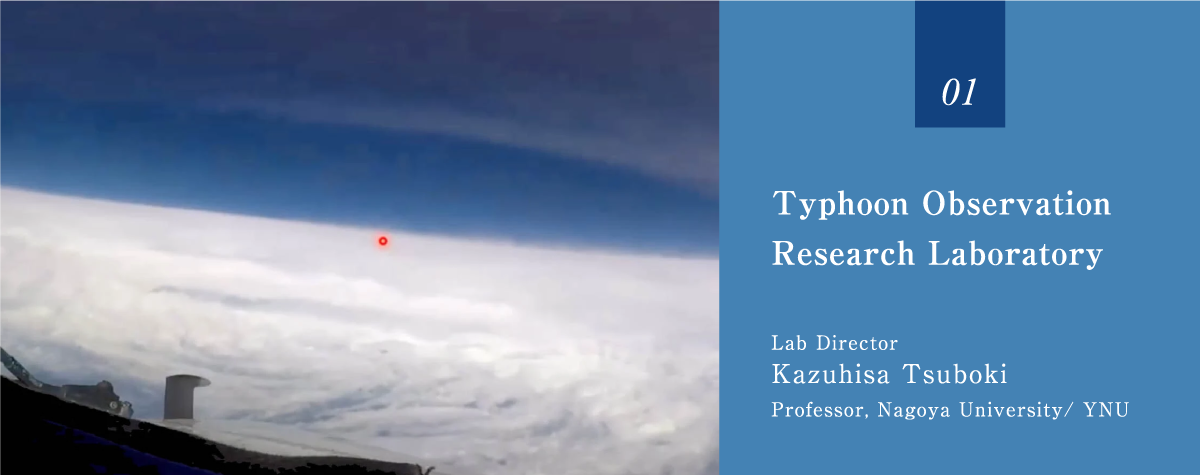
The Typhoon Observation Research Laboratory conducts observational research and data analysis on tropical depressions such as typhoons, as well as on the heavy rains, clouds and precipitation systems associated with them. The Lab’s Director, Prof. Kazuhisa Tsuboki of Nagoya University, was the first person in Japan to conduct typhoon observation from an airplane. The Lab is made up of four teams: the Airborne Observation Mission Team, the Shipborne Observation Mission Team, the Satellite Observation Analysis Team and the Observational Aircraft Development Team. Of these, the Airborne Observation Mission Team and Observational Aircraft Development Team operate mainly out of Nagoya University and University the Ryukyus, which have track records in airborne observation of typhoons. The Shipborne Observation Mission Team possesses an observation ship and is led by the Japan Agency for Marine-Earth Science and Technology (JAMSTEC), which has long been engaged in shipborne observation in tropical seas. The Satellite Observation Analysis Team is led by Hokkaido University and other institutions.
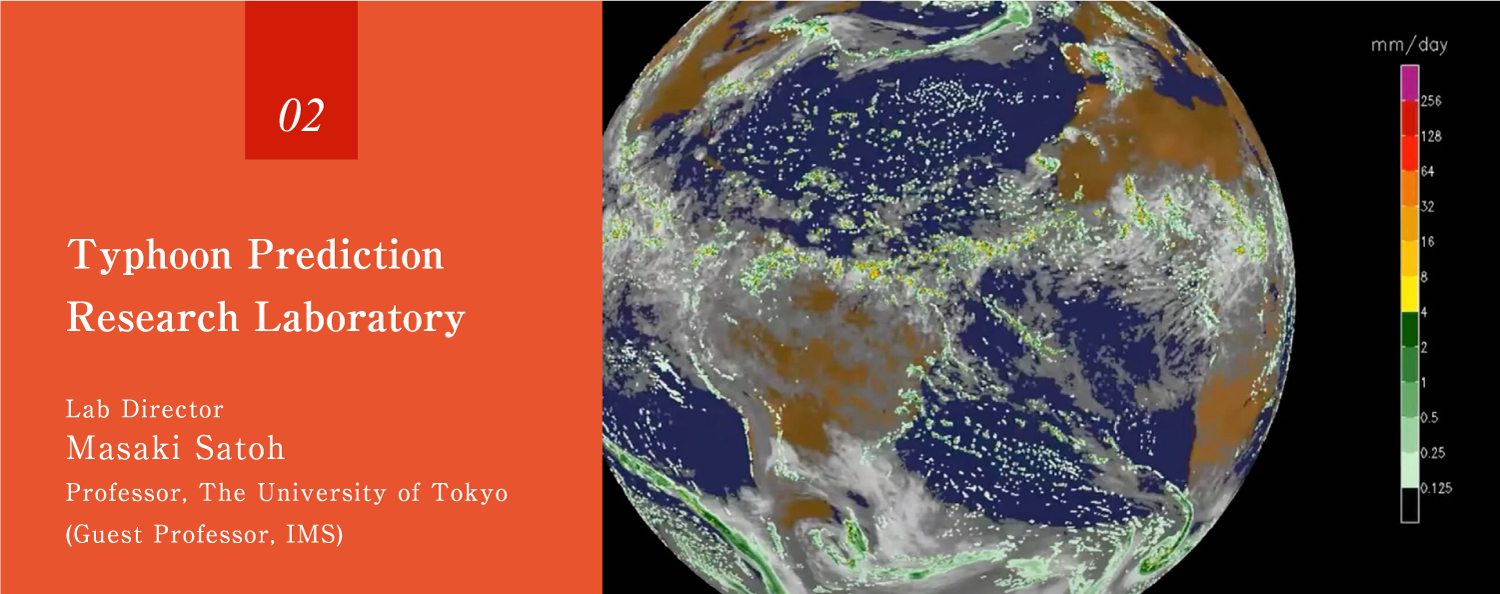
The Typhoon Prediction Research Lab conducts research and technological development to predict typhoons with high accuracy. Professor Masaki Satoh of the University of Tokyo, a leading expert in typhoon simulation research, leads the lab as Director. The Lab consists of the Typhoon Prediction Team, the Disaster Prediction and Impact Assessment Team, the Data Assimilation Team, the Typhoon Climate Change Team and the Beyond Forecasting Team. Leading the Typhoon Prediction Team are the Atmosphere and Ocean Research Institute (AORI) of the University of Tokyo and other institutions. The Kyoto University Disaster Prevention Research Institute (DPRI) and the Institute of Industrial Science (IIS) at the University of Tokyo play the central roles in the Disaster Prediction and Impact Assessment Team. The Data Assimilation Team is led by University of the Ryukyus and RIKEN, while the Typhoon Climate Change Team is headed by JAMSTEC. YNU and Keio University jointly head up the Beyond Forecasting Team.
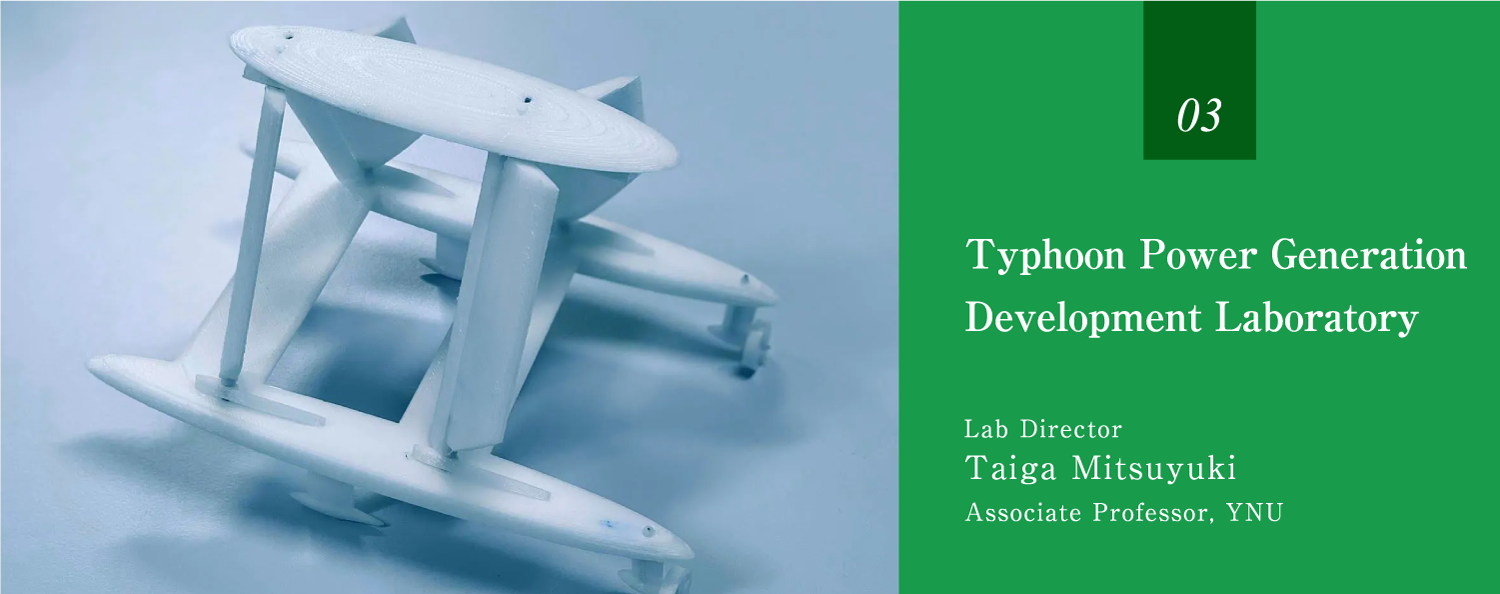
The Typhoon Power Generation System Development Lab tracks typhoons over the ocean and carries out research and technological development to generate and store electricity from the vast stores of energy in typhoons. Headed by Associate Professor Taiga Mitsuyuki of Yokohama National University, an up-and-coming leader in ship-borne system research, the Lab consists of the Power Generation Development Team, the Power Storage and Transmission Development Team, the Typhoon Power Generation Ship Development Team and the Typhoon Power Generation System Integration Team. In collaboration with the IAS’ Advanced Chemical Energy Research Center (ACERC), YNU, the Lab is in charge of power generation and storage using typhoon energy as a resource and technology research related to them, and conducts research in new technologies to promote the formation of a carbon-free society from the meteorological approach. In addition, the Lab aims to revitalize Japan's maritime industries by developing ships and marine structures for the new purpose of typhoon power generation, from concept design to implementation, in partnership with various companies and other research institutes.
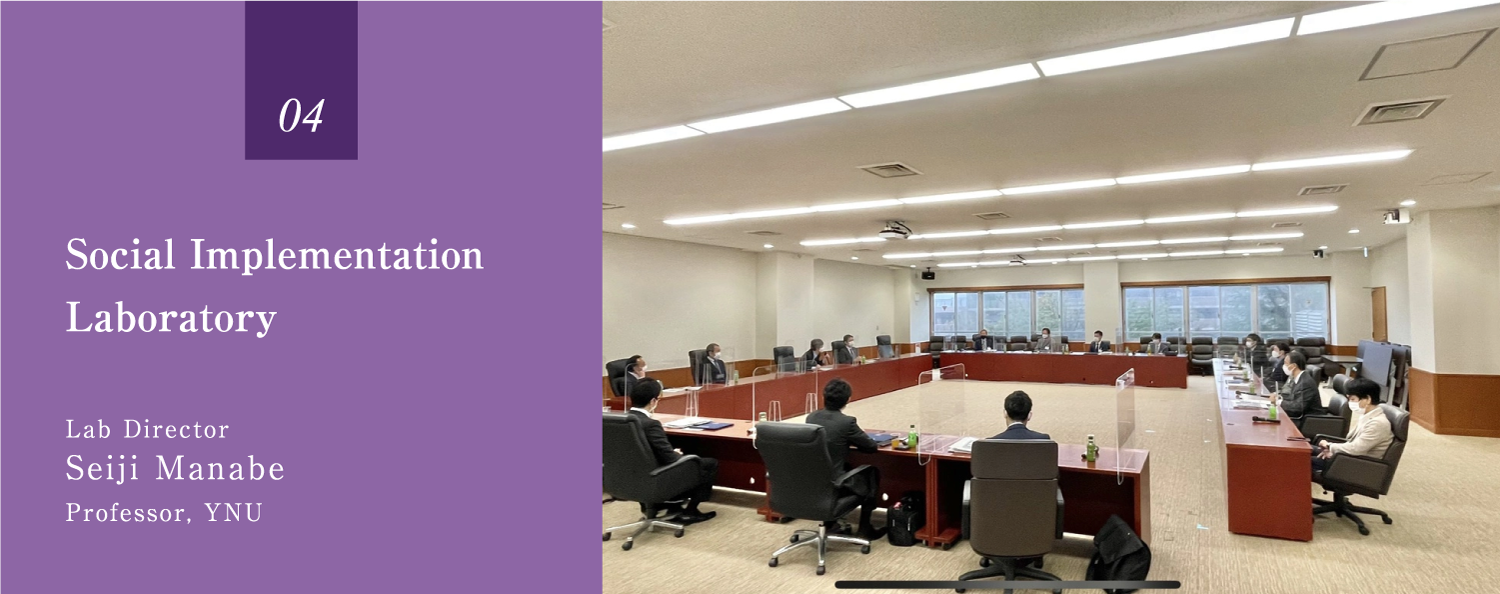
The Social Implementation Promotion Lab examines issues related to social acceptance when research results from the other three TRC labs are introduced into society with a view to promoting their implementation in society. The leader of this lab is Professor Seiji Manabe of YNU. This lab consists of the Coexistence-with-Risk Team, the Industry Partnership Platform Team, the Legal and Social Issues Team, the International Partnership Issues Team and the Education and Outreach Team. In cooperation with the IAS’ Center for Creation of Symbiosis Society with Risk, the Lab forms cooperative structures for risk management related to and proposals of regulations and standards, etc. for the introduction of new energy systems. Recognizing the necessity of obtaining buy-in from the industrial community to build social value, the Lab pursues social implementation through such partnerships while conducting academic inquiry into the creation of social value. In addition, the Lab offers outreach activities on disasters and their prevention related to typhoons and on how to develop knowledge and ideas in the educational field on building a future society.
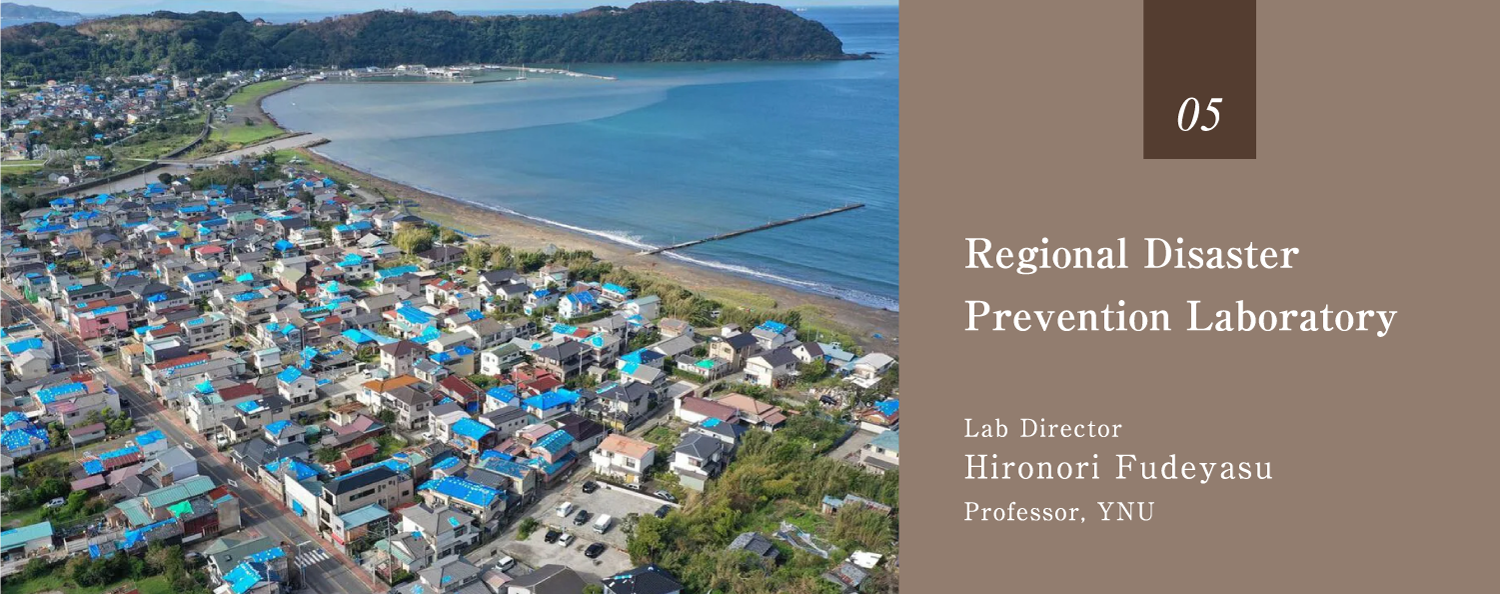
The Regional Disaster Prevention Laboratory conducts research to elucidate the nature of typhoons and other natural disasters and understand the factors that drive them, and proposes solutions to reduce the damage they wreak. Led by its Director, Prof. Hironori Fudeyasu of YNU, this Lab draws chiefly on the resources of Kyoto University’s DPRI, the National Research Institute for Earth Science and Disaster Resilience (NIED) and Aioi Nissay Dowa Insurance Co., Ltd., among others. On issues of wind and flood damage with strong regional characteristics, the Lab conducts basic research aimed at discovering the mechanisms by which damage occurs. The Lab then proceeds to practical research targeting solutions of benefit to society. In the framework of the Tokyo Bay Area Alliance, partnering with Chiba University, Ochanomizu University and other institutions, the Lab promotes disaster-prevention measures in the Tokyo Bay region. The Lab is an active provider of disaster-prevention education, in the firm belief that education plays a vital role in today’s new approach to disaster prevention and mitigation, which integrates institutional and individual activities.
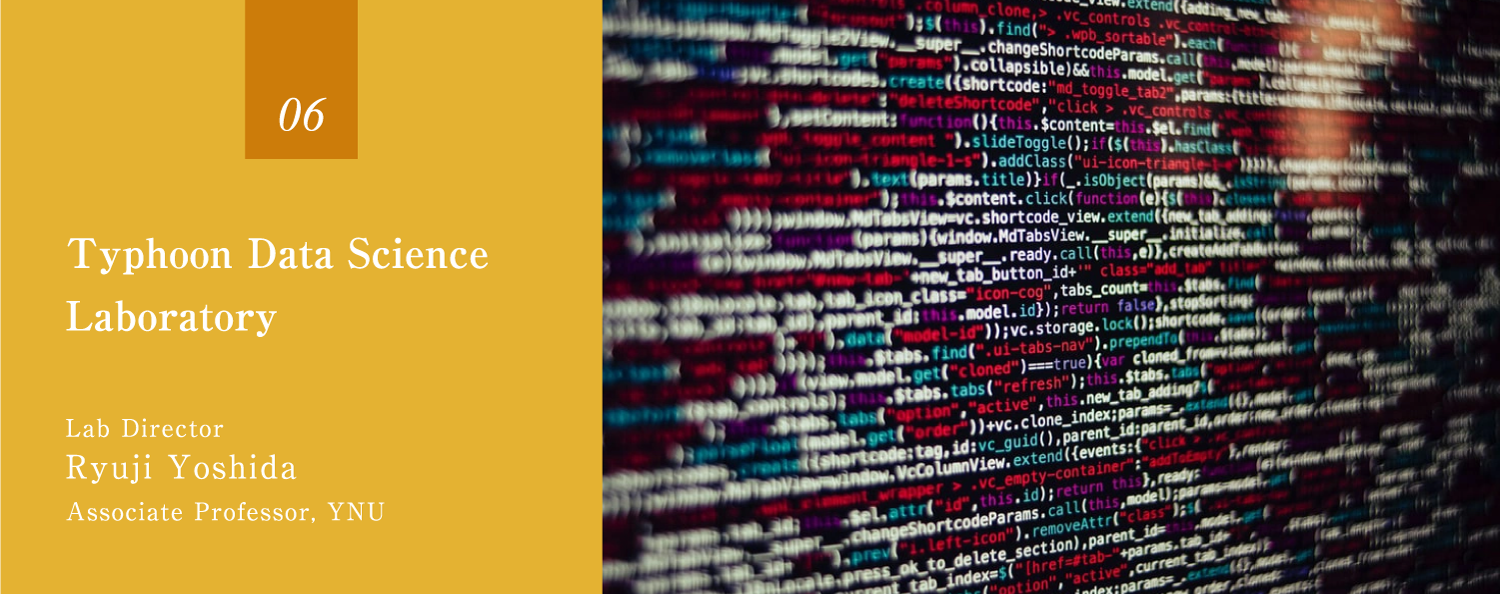
The Typhoon Data Science Laboratory applies data science in research and technology development targeting enhanced resilience against typhoon damage, with the goal of achieving a safer, more secure society. To improve the precision of weather and disaster forecasting and to diversify and personalize applications, the Laboratory examines a wide range of data that can be used to study typhoons. The Lab also applies machine learning to gather, integrate and apply data. In collaboration with organizations such as JAMSTEC, which was a pioneer in advancing machine learning as applied to weather and climate data, the Lab applies cutting-edge machine learning. Also, the Lab works closely with the National Institute of Informatics (NII), an organization with abundant experience and results in disseminating information and coordinating with communities. The Lab also disseminates information about products developed by TRC.